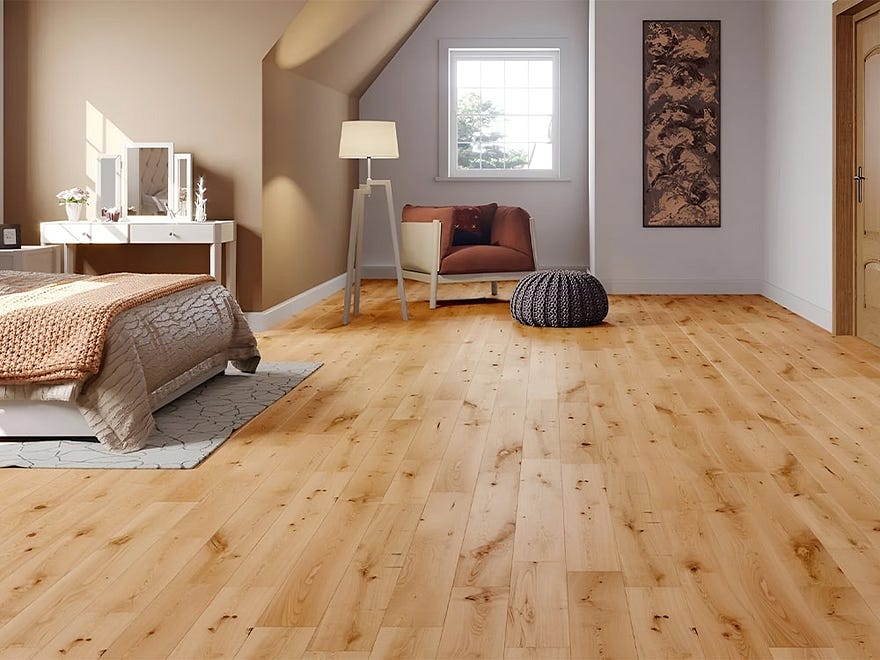Solid Wood Flooring
Solid Wood Flooring: A Timeless Choice for Elegant Interiors
When it comes to adding warmth, character, and lasting value to a home, few flooring options compare to solid wood. Known for its natural beauty and enduring quality, solid wood flooring remains a popular choice among homeowners, architects, and interior designers alike. But what makes solid wood floors such a timeless investment? Let’s explore the key features, benefits, and considerations of this classic flooring solution.
What is Solid Wood Flooring
Solid wood flooring is made from a single piece of hardwood, typically milled from species like oak, maple, walnut, or cherry. Each plank is cut directly from the tree and then kiln-dried to reduce moisture content. This type of flooring is usually about 3/4 inch thick, which allows it to be sanded and refinished multiple times over its lifespan — making it a long-term choice for high-traffic areas in homes and commercial spaces.

The Beauty of Natural Grain
One of the standout features of solid wood flooring is its natural grain and color variation. Each plank is unique, offering rich patterns and tones that evolve with age. Whether you prefer the rustic charm of hand-scraped oak or the sleek finish of maple, solid wood flooring can be tailored to suit both traditional and contemporary interiors. Its ability to complement a wide range of décor styles makes it a flexible option for any design vision.
Durability and Longevity
Solid wood flooring is prized for its durability. With proper care and maintenance, it can last for decades — even up to a century in some cases. Unlike engineered wood or laminate, solid wood can be sanded down and refinished several times, restoring its original appearance and extending its life. This makes it a particularly wise choice for homeowners seeking a flooring solution that won’t need replacing every decade.
Adds Value to Your Home
Investing in solid wood flooring is not just about aesthetics; it can also increase the resale value of your home. Buyers often view hardwood floors as a premium feature, which can make your property more attractive on the market. Additionally, because of its longevity, solid wood flooring can reduce the long-term cost of flooring replacements.
Considerations Before Installation
While solid wood flooring offers many benefits, it’s important to consider a few factors before installation. First, because it is made of real wood, it is susceptible to changes in humidity and temperature. This means it is not ideal for basements, bathrooms, or other moisture-prone areas. Professional installation is highly recommended to ensure proper acclimation, fitting, and finishing.
Sustainable and Eco-Friendly Options
Many manufacturers now offer sustainably sourced hardwoods certified by organizations like the Forest Stewardship Council (FSC). Choosing FSC-certified wood ensures your flooring comes from responsibly managed forests, making solid wood a more environmentally friendly choice than synthetic alternatives.
Conclusion
Solid wood flooring is more than just a practical surface — it’s a statement of craftsmanship, quality, and timeless style. With its unmatched durability, beauty, and ability to be refinished for generations, it’s no wonder solid wood remains a preferred flooring option for discerning homeowners around the world.
Comments
Post a Comment